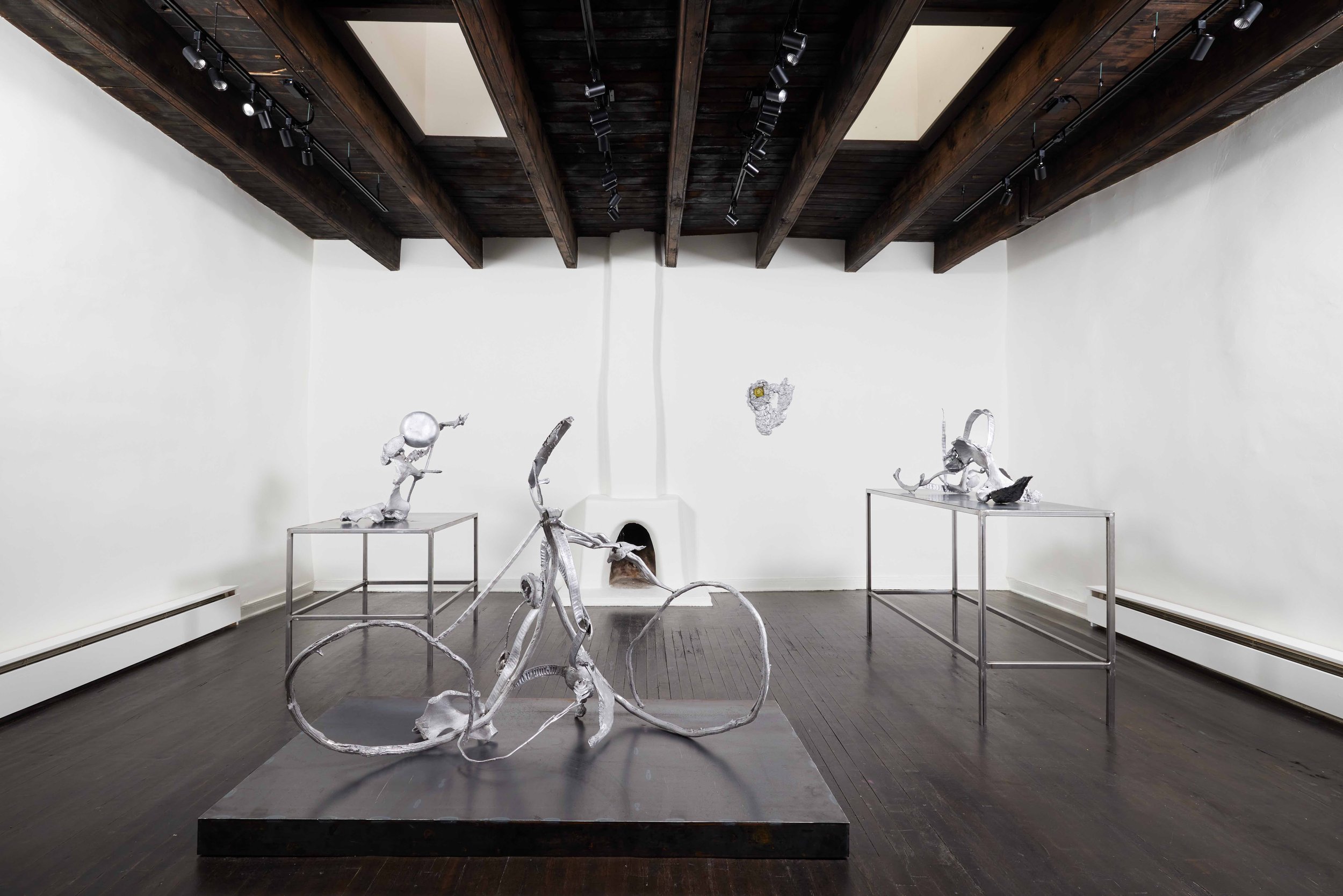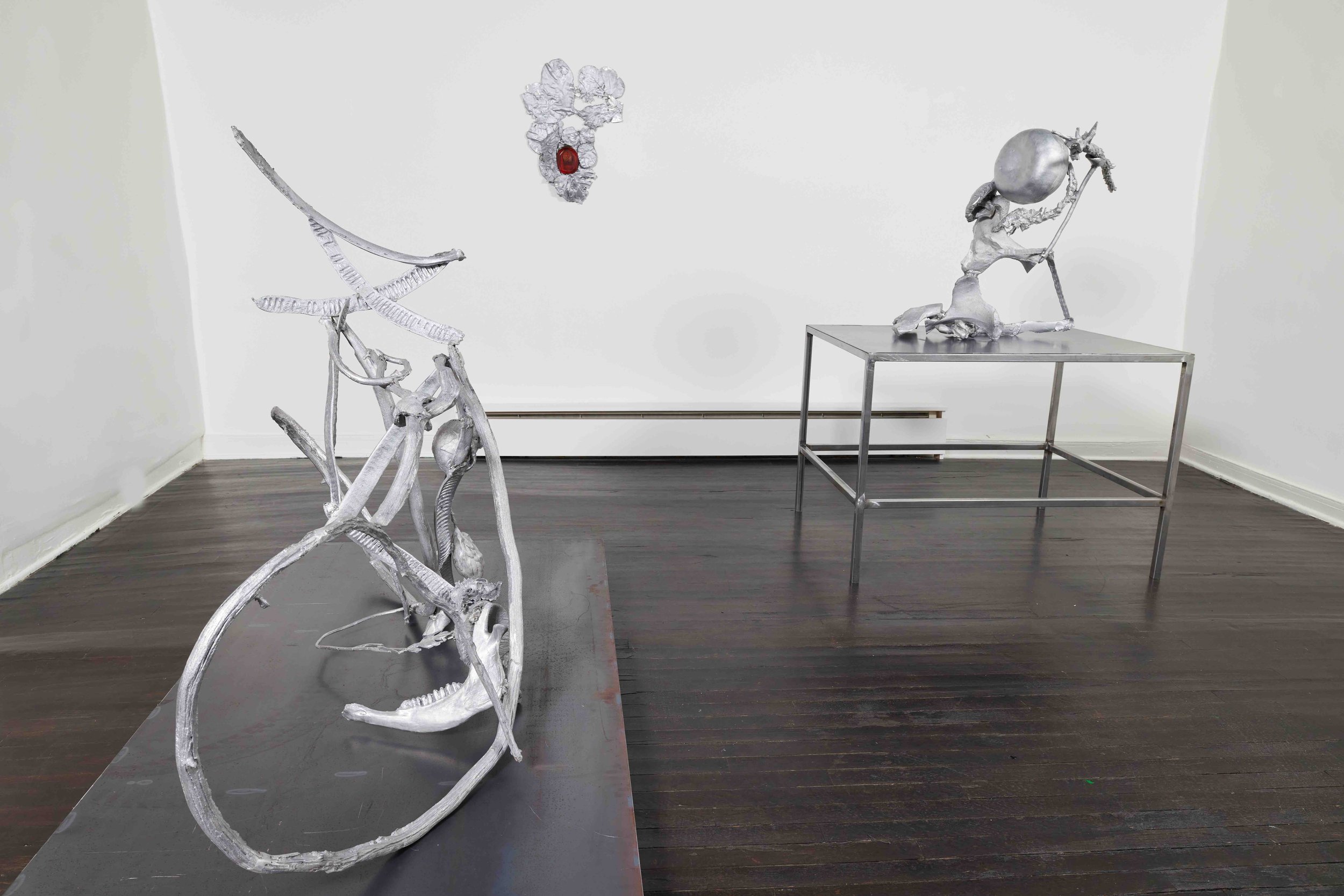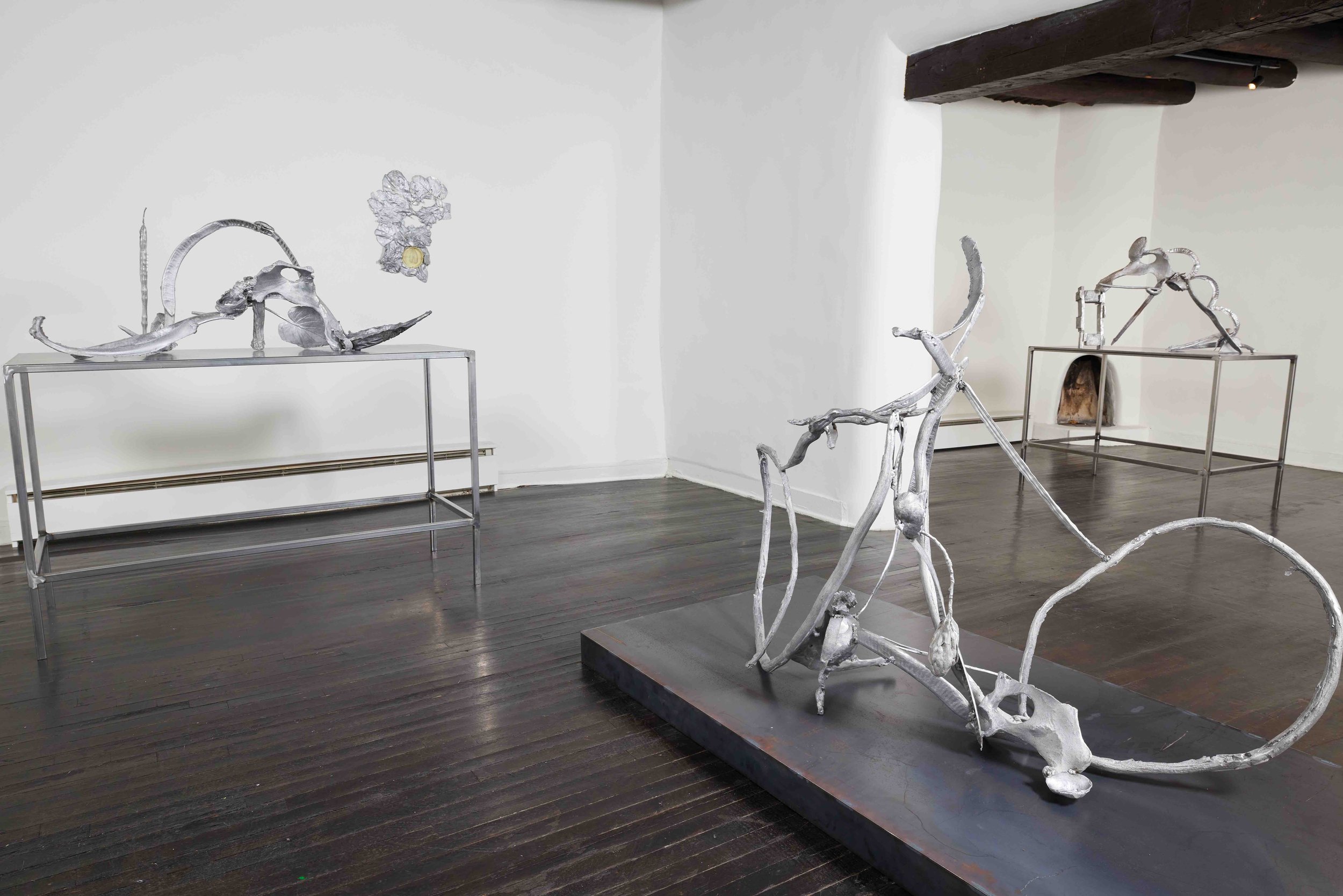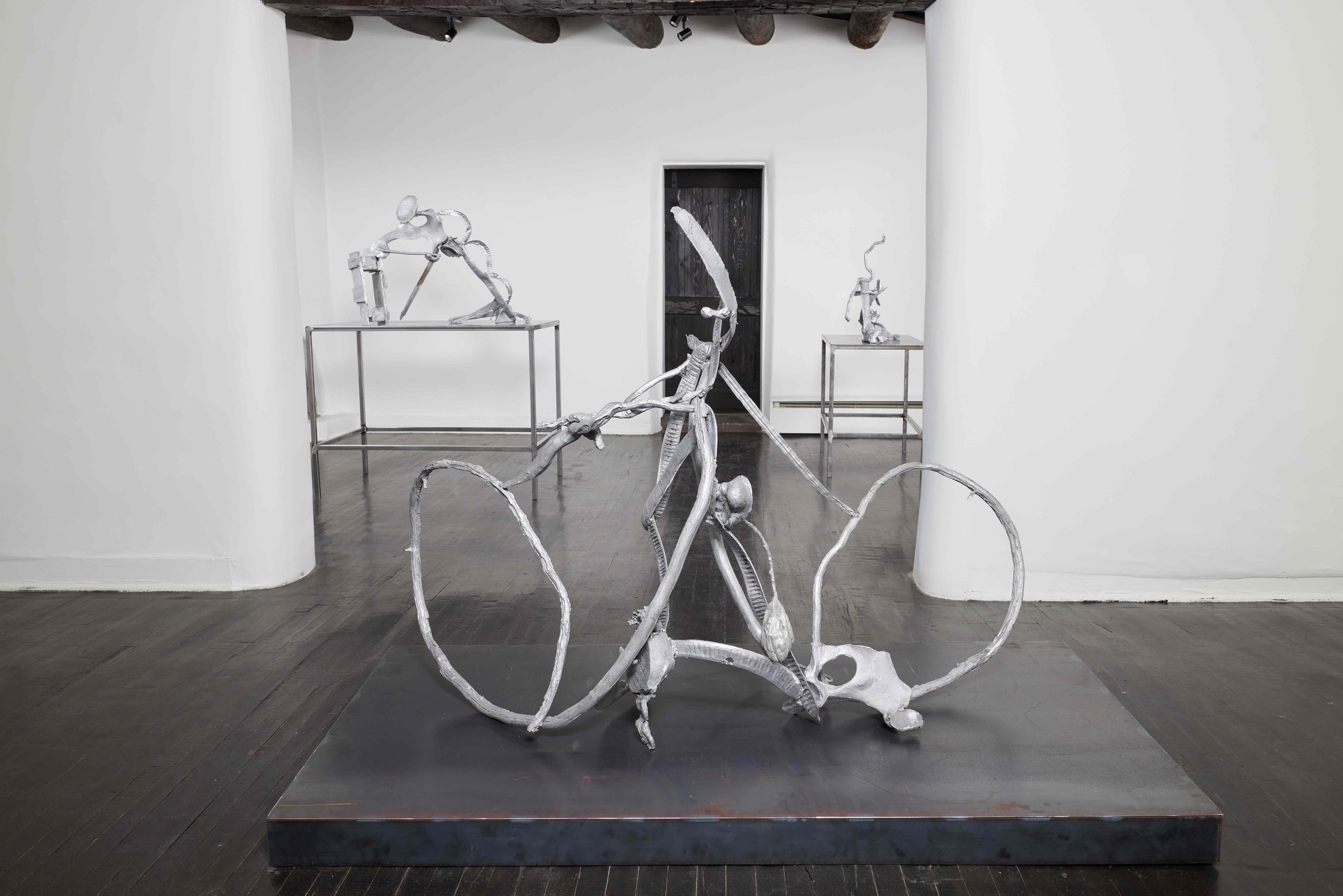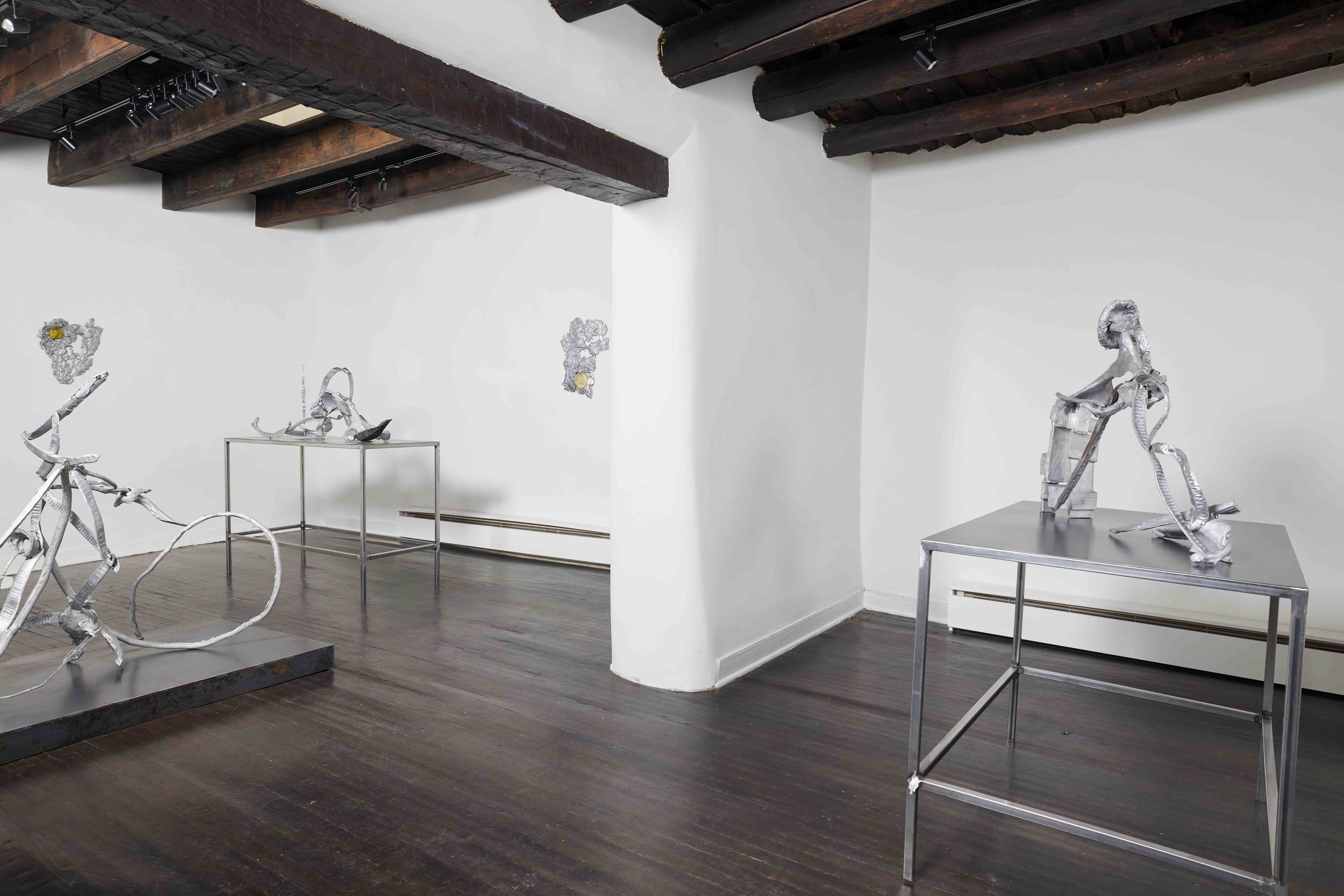Sarah M. Rodriguez
Field
November 18, 2023 – January 20, 2024
In artist Sarah M. Rodriguez’s Field matted leaves frame cast glass hoof prints, branches and seed pods arc and sweep, a seeded sunflower head meets gourd, stalk, bone. Rodriguez collects and combines, most importantly she listens with her hands. Obliterating organic material in the casting process she retains the form’s essence in aluminum, a material the artist describes as not the most “confident” metal, mutabile, with a low melting point, difficult to weld, burns easily, an irreducible element on the periodic table, cosmically abundant, part of the earth’s core. Despite the brittle timbre of aluminum this metal will outlive us, will outlive the organic mass it replaces––the aluminum, the field, is all remains.
In her work as an animal trainer, as she tells me, Rodriguez’s best tools to sculpt the behavior of other species are observation and positive reinforcement. Counter to the myth of domination, “pack leader” mentality, compliance through punishment and reward, the artist instead accumulates information, trust, is sensitized to know when the animal opts in or out. In the studio she also practices close observation and experiments with mutability, allowing forms to self-determine through repetition, recombination, adaptation for balance and singularity. Working through instinct and learning from material responses, she asks in both spaces – the inter-species and the studio: how can we understand non-human beings?
One answer might be obliteration, of self, of the human, of discrete boundaries, of binaries: Figure/ground. Organic/inorganic. Animal/vegetable/mineral. Frame/framed. Self/other. Refuse/Relic. The artist is interested in bifurcation––the hoof that is cast in glass, gem-like, framed ornately by silvered, slivered leaves, is double in its bilateral symmetry and in its indexical trace. The track is loaded with animal information, is readable to other animals, is an indicator of time, weight, scent, direction. The track is also a very primary cast that is recast by the artist, another doubling, underscoring casting as a process central to the construction of all of the sculptures in Field. By casting, the artist says, you are degrading or destroying the original material, the process involves removal, “I can observe things in the world that are non-human, but in order to really understand them I would have to cease to be human.”
“Cast” can be a noun or verb. Definitions range from causing light or shadow to appear on a surface; to register, as in voting; an object made by shaping molten metal or other material in a mold; or to throw something forcefully. All seem to apply here in Field. Rodriguez casts a spell over the detritus she gathers, transforming its temporality by fossilizing decomposition. In casting, carving, composing, and welding the metal components she experiments with complex interrelationships and morphologies, strands of coevolution.
So the field is a clearing, a space for observation and study, where wildness and domesticity overlap, a tangle of decomposition, emergence, and hybridity. In Field we see the results of Rodriguez’s organic experiments, which register the clash of human observation, impact, and inseparability from the living world.
–– Laura Copelin ❦ Deputy Director and Co-Curator, MOCA Tuscon
Sarah M. Rodriguez (b. 1984 in Honolulu, Hawaii) is an artist whose sculptural works often engage plants, animals, and other non-human life forms as collaborators. Her research, artmaking, and work as an animal trainer are practices in interspecies communication, material experimentation, and generating new definitions of ecology. She earned her MFA from the University of California, Los Angeles in New Genres (2014) and a BFA From California College of the Arts (2008). She was a participant in the Shandaken Residency (2016) and the Skowhegan School of Painting and Sculpture (2010). Her works has been exhibited at Tara Downs, New York, US; Commonwealth and Council, Los Angeles, US; MOCA, Los Angeles, US; Paul Soto, Los Angeles, US; Depart Foundation, Malibu, US; La Maison Rendez-Vous, Brussels, BE; Mass Moca, North Adams; Folsom Projects, San Francisco, US; and The Valley, Taos, US; among many others. She lives and works in Ojo Caliente, New Mexico.
